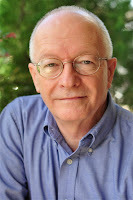Common Writing Obstacles: Building Believable Characters (Part 8)

by Henry McLaughlin @RiverBendSagas
This is the latest in a periodic series about the common obstacles writers face. Both experienced and newbie authors deal with building characters who are believable and real enough for the reader to want to follow for several hundred pages.
For some writers, this can be the most challenging obstacle to overcome. How do we make our characters real? How do we make a figment of our imagination complete enough to engage the reader? To keep the reader interested enough to stick with character on his or her journey? How do we avoid cliches, stereotypes, and making our character sound like everyone else in our genre?
This is one of those areas where we need to involve both the left and right sides of our brain; the analytical and the creative. The creative should dominate the process, but the analytical will help us to not wander too far into the weeds.
A character is most often the impetus for my story. He or she will appear in my mind and arouse my curiosity. He’ll show up in a situation. Sometimes it’s vivid action. Sometimes it seems almost contemplative. But the situation stimulates me to ask questions: Why is she there? Who is she? What is he doing? What does he want? And we’re off on what I like to call a journey of serendipitous discovery.
There is what feels like tons of information and resources for building characters. Some focus on questionnaires to determine character traits. Other focus on physical descriptions. Others deal with the psychological aspects of the character. Many are helpful and require due diligence on the author’s part to discover what works best for them.
In my early years of writing, I tried various personality traits and tools like Meyers Briggs and detailed character questionnaires. I found I spent a lot of time gathering information I never used, or, because I had all this material, I tried to force the information into the story when it wasn’t pertinent or even necessary.
My initial meeting with my characters reveals some basic characteristics: age range, gender, basic physical appearance. After that, what I have found most helpful is to let the character reveal the depths of who he or she is to me by releasing them to tell me their story.
Ray Bradbury wrote, “First, find out what your hero wants, then just follow him!”
William Faulkner told a group of students, “Get the character in your mind. Once he is in your mind, and he is right, and he’s true, then he does the work himself. All you need to do then is to trot along behind him and put down what he does and what he says.”
And I let the character tell me the story. In multiple point of view stories, I discover more depth and meaning in the plot and overall story and character arcs. In the characters telling, I discover their vital elements in their backstory, their personality traits, what drives them and what hinders them. These come out when the information is necessary and relevant to the story.
I once thought one of my characters was being stubborn in not revealing more of herself. So, I interviewed her (which is a great technique, by the way). At one point I asked, “Rachel, I don’t get you. What do you want?”
She did one of her fabulous eye rolls, sighed, and said, “Don’t you get it? Have you even read the book?”
At that moment, she clicked for me. What I was missing was her feisty independence. Men had dominated and used and abused her. No man was ever going to dominate her again. We’ve since become great friends. She is one of my favorite characters, even when she nags me to write another book.
How do you develop your characters? What have you found helpful in making your characters believable?
TWEETABLECommon Writing Obstacles: Building Believable Characters from author Henry McLaughlin (@RiverBendSagas) on @EdieMelson (Click to Tweet)
Don't Miss the Rest of the Posts in This Series!COMMON WRITING OBSTACLES (PART 1): TIMECOMMON WRITING OBSTACLES (PART 2): TALENT VS LEARNINGCOMMON WRITING OBSTACLES (PART 3): PERFECTIONISMCOMMON WRITING OBSTACLES (PART 4): WORLD BUILDINGCOMMON WRITING OBSTACLES (PART 5): TAKING RISKSCOMMON WRITING OBSTACLES (PART 6): PLOTTINGCOMMON WRITING OBSTACLES (PART 7): TAKING RISKSCOMMON WRITING OBSTACLES (PART 8): BUILDING BELIEVABLE CHARACTERS
Links to The Art of Self-Editing Blogs:THE ART OF SELF EDITING PART 1THE ART OF SELF-EDITING, PART 2THE ART OF SELF-EDITING, PART 3THE ART OF SELF-EDITING, PART 4THE ART OF SELF-EDITING, PART 5
 Henry’s debut novel, Journey to Riverbend, won the 2009 Operation First Novel contest.
Henry’s debut novel, Journey to Riverbend, won the 2009 Operation First Novel contest.Henry edits novels, leads critique groups, and teaches at conferences and workshops. He enjoys mentoring and coaching individual writers.
Connect with Henry on his BLOG, TWITTER and FACEBOOK.
Featured Image: Photo by Lauren Mancke on Unsplash
Published on July 26, 2023 22:00
No comments have been added yet.



